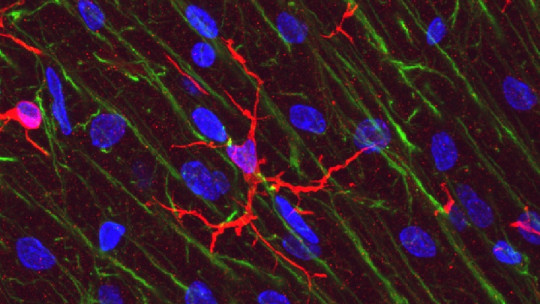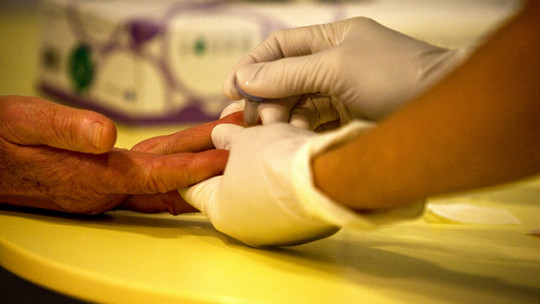We have all experienced a tingling and numb sensation in one of our lower limbs at some point. This occurs when we have been sitting in the same position for some time and we are pressing one leg with the other. When we get up from the sofa or chair, we try to put our foot down, but it doesn’t seem to respond and We say that “our leg has fallen asleep”
Numbness and tingling are normally accompanied by pricks, but little by little all the symptoms fade and after a few minutes they end up disappearing completely.
This sensation is quite common and is known as paresthesia, but contrary to popular belief, it does not depend on a lack of irrigation and has more to do with the nervous system. Numbness in the legs, known as paresthesia in the medical field, is caused by compression of the nerves or their inflammatory state.
In this article we will explain the different possible causes of numbness in the legs including pathological and non-pathological.
What is leg paresthesia?
Paresthesia of the legs is described as numbness and tingling sensation experienced in the lower limbs This is normally not serious and disappears within a few minutes of appearing, but sometimes it can be caused by another condition, usually pathological.
When we put too much pressure on the nerves by sitting with one leg on top of the other, they stop working correctly, this results in the inability to move the leg; However, when the pressure is relieved, everything normally works correctly again and we regain mobility.
By sitting cross-legged for a long time, the pressure exerted can compress the nerves in the leg This prevents the brain and the nerves that end in the lower limbs from communicating correctly, the nerve impulses do not arrive. The main nerves affected by leg paresthesia originate in the torso and lower back, and reach the toes.

If paresthesia is the main cause of numbness in the legs, it may also be accompanied by burning, tingling, and a burning sensation in the skin (as if it is “crawling”), in addition to the characteristic temporary immobility.
By changing posture, the numbness and all the symptoms that accompany paresthesia should disappear Paresthesia of postural origin can be avoided and prevented by changing position often and avoiding sitting with legs crossed or with one leg over the other.
This condition may be non-pathological and originate from pregnancy; In this case, there are different origins of paresthesia, which not only have to do with the nervous system, but also with the hormonal and bodily changes experienced during the pregnancy process.
But sometimes, paresthesia can derive from other more or less serious conditions In some cases, numbness in the legs can be caused by an underlying disease, such as in the case of multiple sclerosis, diabetes or fibromyalgia, where leg numbness is described among its symptoms.
The main causes of paresthesia in the legs
Normally, the origin of numbness and tingling sensations in the legs is postural. However, if this condition occurs frequently and has no apparent cause, it may indicate the existence of an underlying disease.
The most common causes of paresthesia include the following.
1. Injuries
Some injuries are likely to cause pressure on the nerves that go to the legs, and cause sensory alterations; For example, sciatica usually originates from a problem in the spine. The most common injuries that can put pressure on the nerves and make the feet and legs go numb, occur in the torso, lower back, legs, ankles, and feet.
2. Diabetes
Some diabetes patients develop a type of nerve damage called diabetic neuropathy. Diabetic neuropathy causes numbness, tingling, and pain, usually in the feet but in its most serious form it can spread and cause the same symptoms throughout the leg.
3. Peripheral arterial disease
The legs are one of the parts of the body most affected by peripheral arterial disease. People with peripheral artery disease experience pain and cramps in the lower part of the body (normally legs and hips) when they perform some type of physical effort such as walking or climbing stairs. Some people affected with the disease also experience feelings of numbness and weakness in the legs as symptoms of the condition.
Peripheral artery disease (PAD) is caused by narrowing of the peripheral arteries in the legs, arms, and stomach. Constriction of the arteries decreases their pumping capacity and reduces blood flow.
Symptoms of peripheral artery disease usually go away after a few minutes of rest after practicing physical exercise.
4. Tumors
The growth of benign (non-cancerous) tumors, cysts, abscesses, and nodules can put pressure on the brain, spinal cord or any part of the legs and feet.
This pressure restricts blood flow to the legs and feet, causing paresthesia.
5. Alcohol consumption
Alcohol is toxic, this means that it can cause damage to our body. Alcohol affects the nervous system, and can affect the nerves responsible for numbness symptoms especially on the feet
Chronic alcohol consumption decreases levels of B vitamins, such as B-1 (thiamine), B-9 (folate), and B-12. Reduced levels of these vitamins are related to nerve damage that causes paresthesia.
6. Fibromyalgia
Fibromyalgia is a disease considered chronic or long-term. Fibromyalgia Patients Experience Widespread Body Pain, Aches, and Tenderness Some affected people also report experiencing numbness and tingling in the extremities, both upper and lower.
- Related article: “Fibromyalgia: causes, symptoms and treatments”
7. Sciatica
Lower back problems, such as a lumbar fracture or hernia, can compress nerves originating from the spinal cord and communicate with the lower limbs. This pressure can cause numbness or sensory disturbances.
Among the most common conditions of neuralgic origin (affecting the nerves), is sciatica, which describes irritation or pinching of the sciatic nerve. The sciatic nerve is the longest nerve in the body, originating in the lower back and reaching the feet, passing through the buttocks and legs. Like other nerves, if irritated or compressed due to other conditions or trauma, a person may experience numbness or tingling in the legs and feet.
8. Tarsal tunnel syndrome
Tarsal tunnel syndrome It is caused by compression or injury of the posterior tibial nerve which runs down the back of the leg and innervates the heel and sole of the foot.
The tarsal tunnel corresponds to a narrow channel or tunnel located on the inside of the ankle. Tarsal tunnel syndrome causes numbness, tingling, stinging, and sometimes burning in all parts of the foot, including the ankles and heels.
9. Paresthesia and pregnancy
Paraesthesia is common and frequent in pregnant people. In most cases, leg numbness and tingling that occurs during pregnancy They are the result of hormonal and bodily changes They are produced to meet the needs of the fetus and prepare the body for childbirth. In some cases, it may be a pinched nerve, as in sciatica or meralgia paresthetica (the latter origin is much less common).
Although most cases of numbness and tingling in pregnancy are normal, there are some more serious conditions that include numbness and tingling as symptoms. Therefore, it is important to consult with your doctor about any manifestation of paresthesia, especially if it is accompanied by other symptoms such as abdominal pain or severe swelling, among others.
Conclusion
Paresthesia of the legs is common. The tingling and numbness experienced from poor posture is not serious and normally all its manifestations disappear after a few minutes. However, paresthesia that occurs chronically and has no apparent cause can sometimes be the consequence of a pinched nerve leading to the legs, as in the case of sciatica or metacarpal tunnel syndrome. and in other cases it may be indicative of the presence of an underlying pathological condition. Among the most common pathological conditions of leg numbness are: diabetes, alcohol consumption, abnormal growths such as tumors, fibromyalgia and peripheral arterial disease.
During pregnancy, due to the bodily and hormonal changes experienced, paresthesia usually appears throughout the second or third trimester. Numbness in the legs during pregnancy is common and if it is not accompanied by other symptoms, it is not serious, although it is always advisable to consult with your doctor about any changes experienced during pregnancy.









